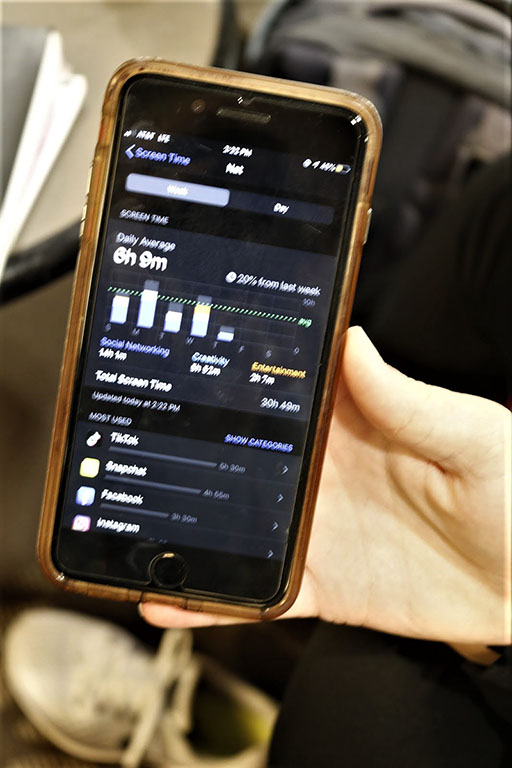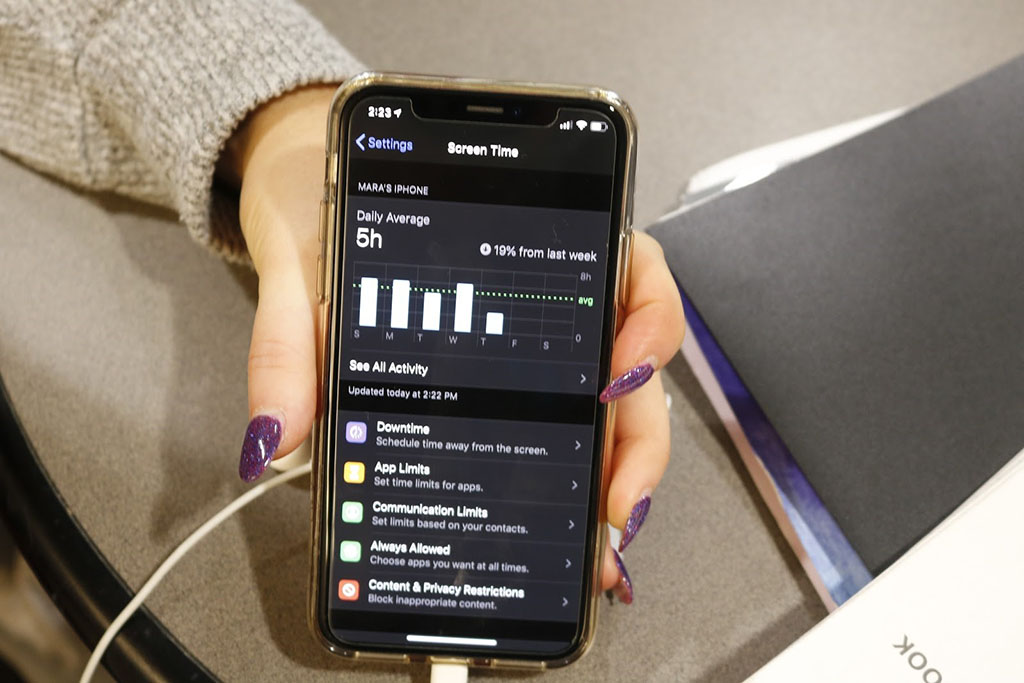Natalie Burrow, an intended finance major at UGA, spends a daily average of six hours on social media. According to her Screen Time tracking, most of her time was spent on TikTok and Snapchat, followed by Facebook and Instagram.

According to a survey conducted in 2018, Internet users average about two and a half hours on social media per day; Americans between the ages of 16 and 24 spend roughly three hours per day. That puts Burrow at three and a half hours above the average.
Pew Research Center states this teens-and-early-20s demographic mostly visits social networking sites such as YouTube, Facebook, Instagram and Snapchat.
Why It’s Newsworthy: Social media use in young adults is increasing, and sometimes surpassing what’s reported by data.
Similarly to Burrow, Humayra Bramblett, an international affairs major at UGA, averaged five hours a day spent on social media.
“I look at my [screen time], and that’s when I realize how much time I’ve actually spent on there, and then I quickly click my phone off and run away,” said Bramblett.

Sydney Jerman, a communications sciences and disorders major at UGA, spent almost three hours on social media, which is closer to the national average. She said she was on social sites because she was bored.
Celine Dang, a health promotion student at UGA, argued that her time spent online was “to fill time, but to also get quick satisfaction.” She says she, among others, is looking for quick stories to entertain before quickly moving on to the next exciting post. It is that “quick satisfaction” that helps shorten users’ attention spans, argued Dang.
Dang and Jerman also believe social media use has led to more surface-level interactions.
Massachusetts Institute of Technology professor Sherry Turkle agrees that social media hinders communication. In an interview with Greater Good at University of California, Berkeley, she argued that many physical cues are lost when communicating online—cues such as eye contact, body movement and change of tone.
It is these physical social cues that are missing when Jerman shares social media posts with her friends.
“Me and my roommates—we’ll all be on our phone … and send each other that picture on Twitter, but there’s still a lack of communication within the room,” Jerman said. “It kind of makes us closer because we know what would make each other laugh. But at the same time, it’s very surface-level.”
However, those online interactions do help keep people stay connected. Both Jerman and Burrow say they use social media to keep in touch with those farther away.
Burrow and Bramblett also said social media helps connect them to new people, including new employers through LinkedIn. Burrow says her new LinkedIn page helps her connect with friends and family in a more professional manner, giving her a jump-start on her career.
Jennifer Conley is a senior majoring in journalism in the Grady College of Journalism and Mass Communication at the University of Georgia.









Show Comments (0)